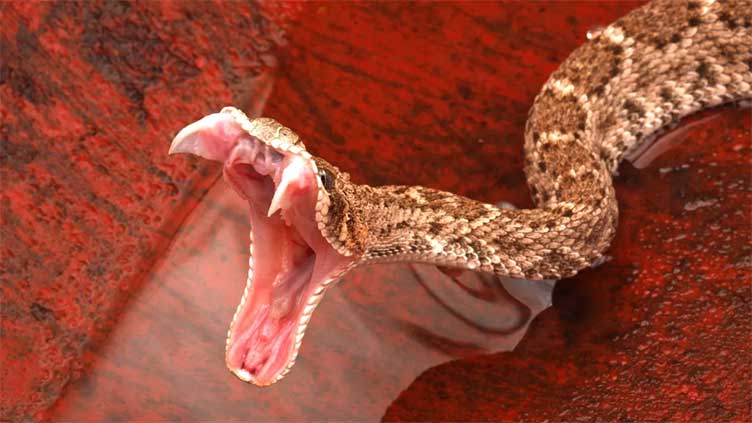Researchers find blood pressure treatment in snake venom

These findings pave way for potential development of new blood pressure medications
(Web Desk) - In a recent breakthrough, researchers from Brazil have discovered novel peptides in the venom of two snake species: the lancehead pit viper Cotiara (Bothrops cotiara) and the South American bushmaster (Lachesis muta).
These findings, funded by the São Paulo Research Foundation (FAPESP), pave the way for potential development of new blood pressure medications, underscoring the untapped potential of venom in medical applications.
The study on the lancehead pit viper venom yielded an intriguing peptide named Bc-7a.
This peptide inhibits the angiotensin-converting enzyme (ACE), a property shared by existing blood pressure drugs like captopril.
However, Bc-7a offers a potential advantage over current medications: it may have fewer side effects. The study, published in the ‘Biochimie’ journal, reported a total of 197 peptides, with 189 being entirely new discoveries.
The second study delved into the venom of the South American bushmaster.
This research identified 151 peptides, with 126 being previously unknown.
Of these, the peptide Lm-10a stands out as it also inhibits ACE, indicating potential use in treating blood pressure issues.
The identified peptides are believed to be the result of fragmentation during venom maturation, pointing to a complex and dynamic nature of venom evolution.
Principal investigator Alexandre Tashima emphasized the dynamism of toxin maturation and the potential for more discoveries in the realm of peptides and their biological roles.
He noted the urgency of such research, as many species could become extinct before being studied.
Through the lens of these studies, we gain a deeper understanding of the intricate biological mechanisms in venom evolution.
This research not only underscores the immense potential of venom for medical applications but also highlights the need to conserve biodiversity to unlock further scientific breakthroughs.


